If you've always imagined that UK waters are only filled with cod, mackerel, herring, the odd shark and perhaps some escaped goldfish, the Marine Conservation Society are here to put you right. They have shared some amazing images taken by talented photographers from around the UK, and it turns out that the waters around the British Isles are far more diverse than you might imagine.
Take a look through our gallery of great images, and when we are all allowed out again, why not see how many of these you can spot over the coming months? You can then report what you see toThe Marine Conservation Society’s sightings programme.
Blue Shark basks in the sunshine
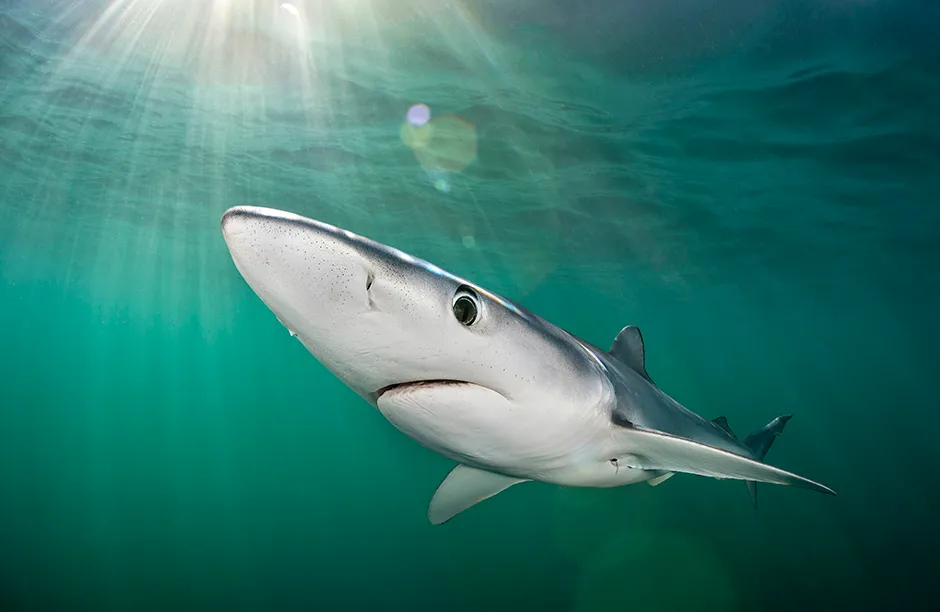
Photographer Alex Mustard:"I’d only seen blue sharks in British waters once before, so was delighted to get the chance on a sunny late-September day in 2020. After a few hours waiting the sharks started arriving, as their numbers builtupthey became more confident and rewarded me and my buddy with plenty of close passes.
"This frame of a beautiful female slicing through the autumnal sun was afavouriteand stands out because of the blobs of atmospheric lens flare. Blue sharks are sadly the world’s most fished shark, so it was a real treat to see them."
Flamboyant Nudibranch
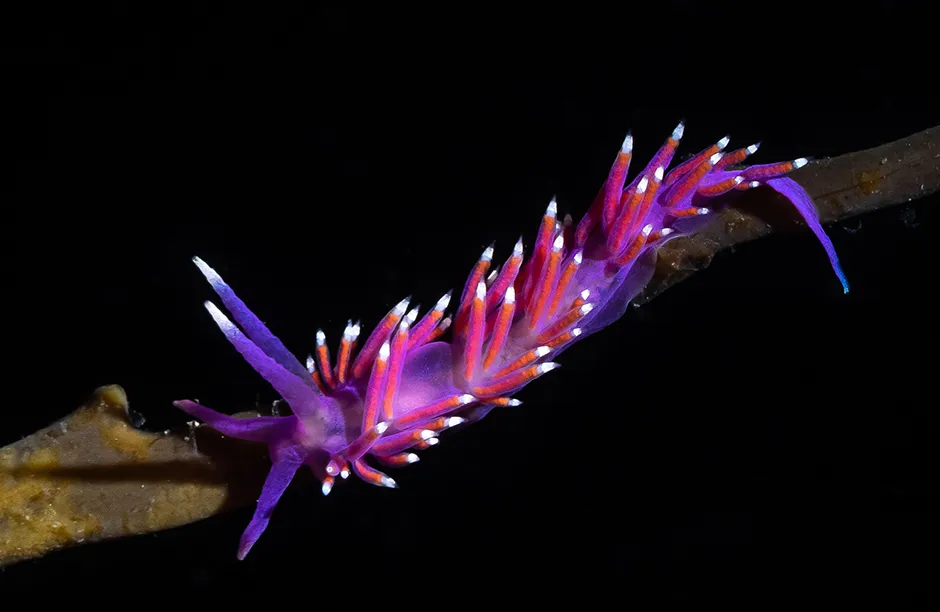
Photographer Dan Bolt: "Thecoloursof this nudibranch make it not only one of our most flamboyant, but also easiest to spot! In a dark area under the pier this individual was making its way along a stalk of kelp. A flash of pink and purple in my torch light caught my eye, and so I had the pleasure of observing it for several minutes before I moved on."
How Now Brown Crab
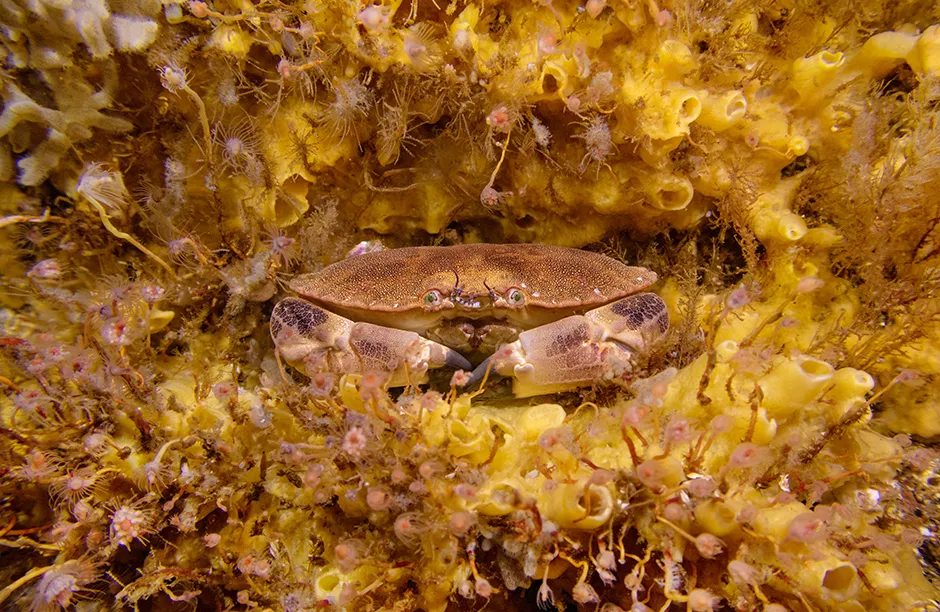
Photographer James Lynott: "Situated at the narrow entrance to Loch Etive, near Oban, the Falls of Lora has a reputation of being a bit of a scary dive. Given that the tide races through creating upwells, whirlpools, and standing waves, it’s easy to understand why. But done at the right time it is an excellent site and easily a favourite shore dive of mine.
"There is such amazing underwater topography and proliferation of life at this site, there was plenty to admire and photograph. While swimming along one of the gullies this crab caught my eye as it seemed to be comfortably nestled into the yellow breadcrumb sponge and hydroids surrounding it."
Daydreaming Puffin
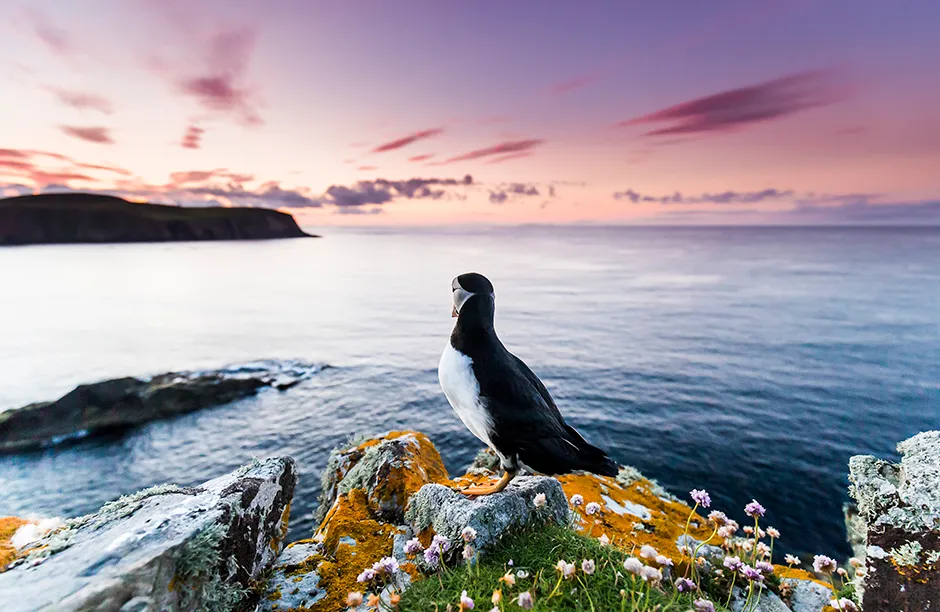
Photographer Kevin Morgans: "When photographing an animal, eye contact is a critical component, allowing your viewer to connect with the image. This image breaks many of the traditional rules. The setting sun, the uneasy pose of the puffin and scene all throw up many questions and thoughts. Where is the puffin looking? What is it thinking? What lies beyond the horizon?"
See here Sea Hare
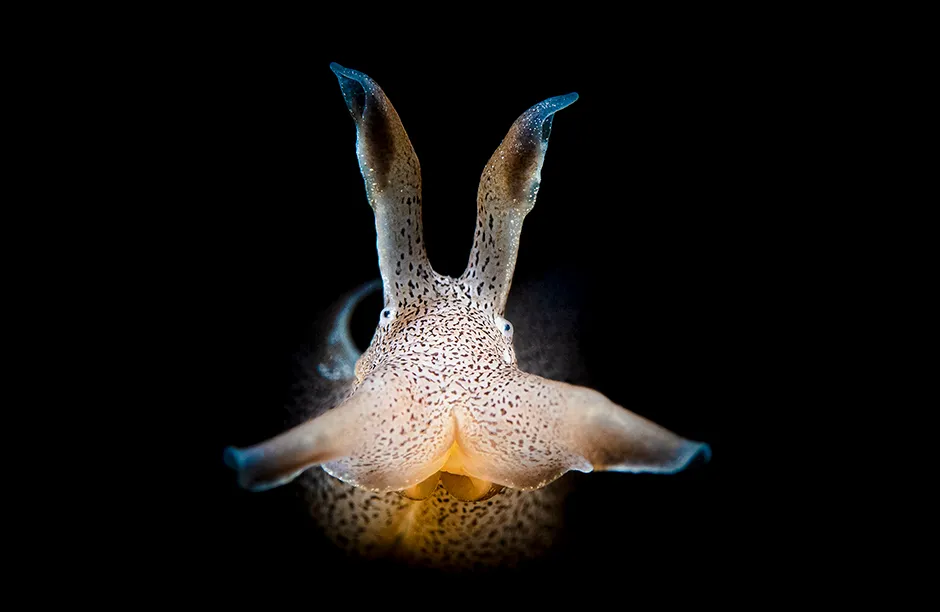
Photographer Kirsty Andrews: "Sea hares look brown and sluggish at first glance but if you look closely they have delicate patterns and colours. I used a snooted spotlight effect to show this off and highlight the head tentacles which resemble a hare's ears, giving this animal its common name."
Relaxing Starfish
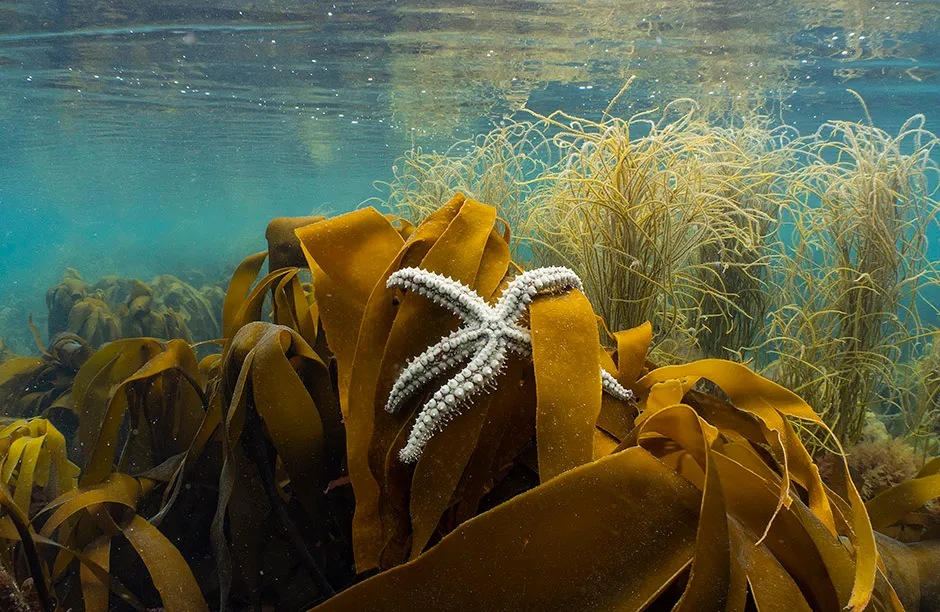
Photographer Paul Naylor: "This starfish slowly walking up to the top of the kelp canopy was seeking a good vantage point from where it could release its spawn. A chemical sent out by females with their eggs prompts neighbouring starfish to join the party."
What about Bob?
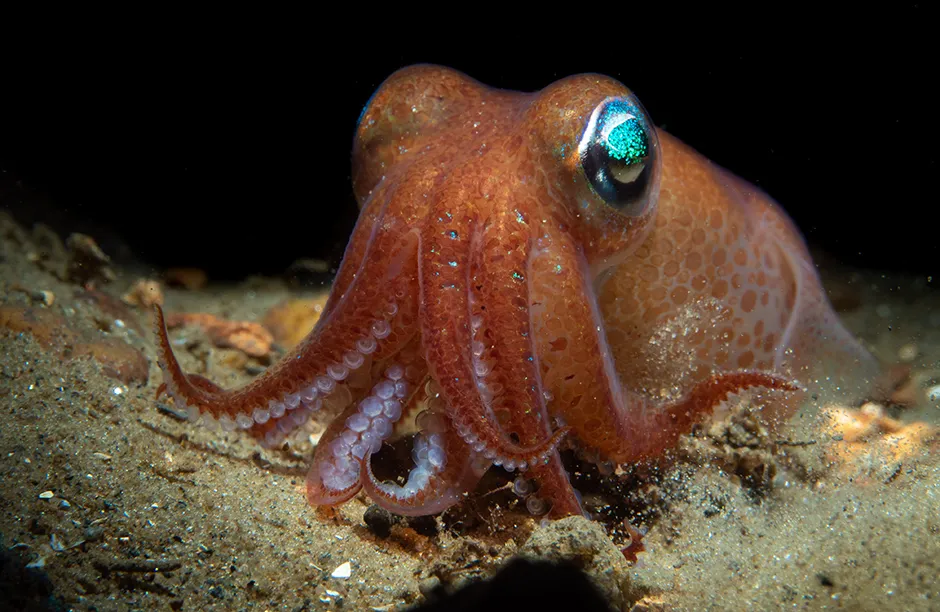
Photographer Mark Kirkland: "I was solo diving at a site called A-Frames - which getsitsname from the huge sunken concrete blocks which once formed a largepier. They're a great anchor point for marine life so there's usually something interesting going on. It's only anhour’sdrive from Glasgow so I dive there regularly.
"Within minutes of entering the water I found my first one, then my second... and my third. They were everywhere! They're quite comfortable around divers, however will burrow in the sand when they've had enough and that's exactly what this one was starting to do when I snapped this shot."
Grey Seals in the surge
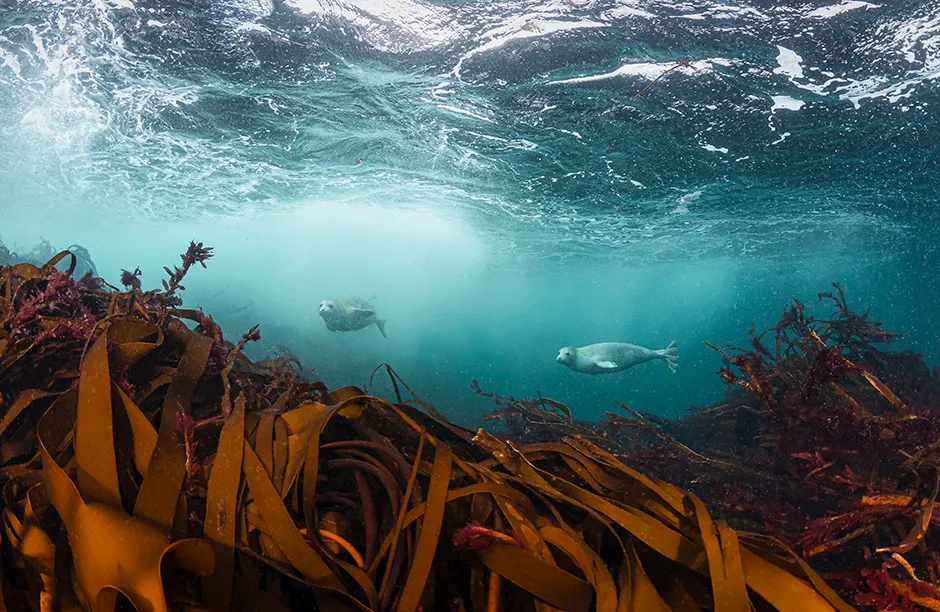
Photographer Kirsty Andrews: "The Grey seals on the North coast of Scotland are not as accustomed to divers as in some UK locations, but it was fun to watch them enjoying themselves at a distance. They were far more comfortable in the surging waves than I was, as I clung on to kelp to capture this photo."
Check out some more of our interesting nature galleries:
- What Goes Up: World Nature Photography Award Winners
- Mobbed by Mobula Rays
- A Dance of Sharks and Gulls
The Lumpsucker Proxy
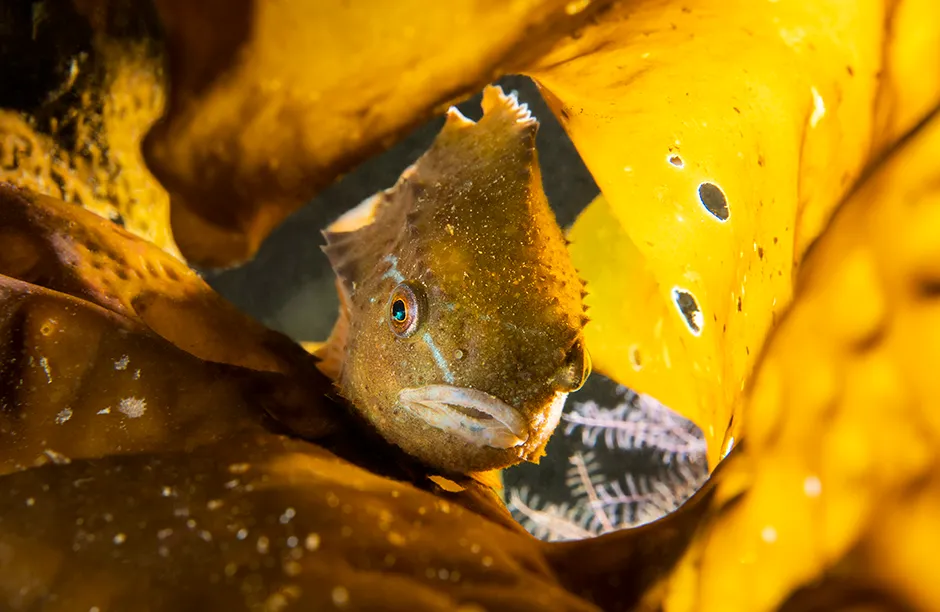
Photographer Alex Mustard: "This young lumpsucker was about the size of a tennis ball and was living attached to the blades of sugar kelp. My buddy Kirsty Andrews found this one and I photographed it with one of my flashes backlighting the kelp to reveal its goldencolour.
"As always with great finds, it was at the end of a long and chilly November dive, so I only had time for a few pictures before I had to bid it goodbye. I like the featherstar arms peeking into the background of this image, which are so characteristic of this area in the far north west of Scotland."
Underwater Fireworks
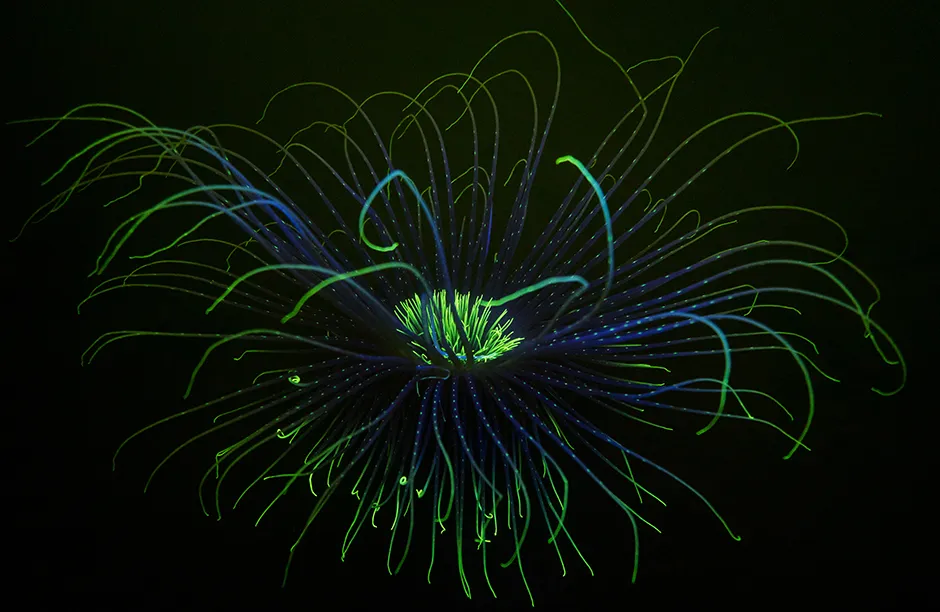
Photographer James Lynott: "Over recent years underwater fluorescence photography has become a passion of mine, particularly in British waters. I never know quite what I’m going to find that will fluoresce under the blue (near UV) light. After spending the day diving at theGarvellachsmy buddy and I decided to stop off for an evening dive in Loch Fyne.
"The site we decided on was at Inveraray slip which is fantastic for fireworks anemones. This particularly large individual was a favourite of mine from this dive as I was able to capture the whole anemone with its long tentacles stretched out within frame."
I'm going to be a common star
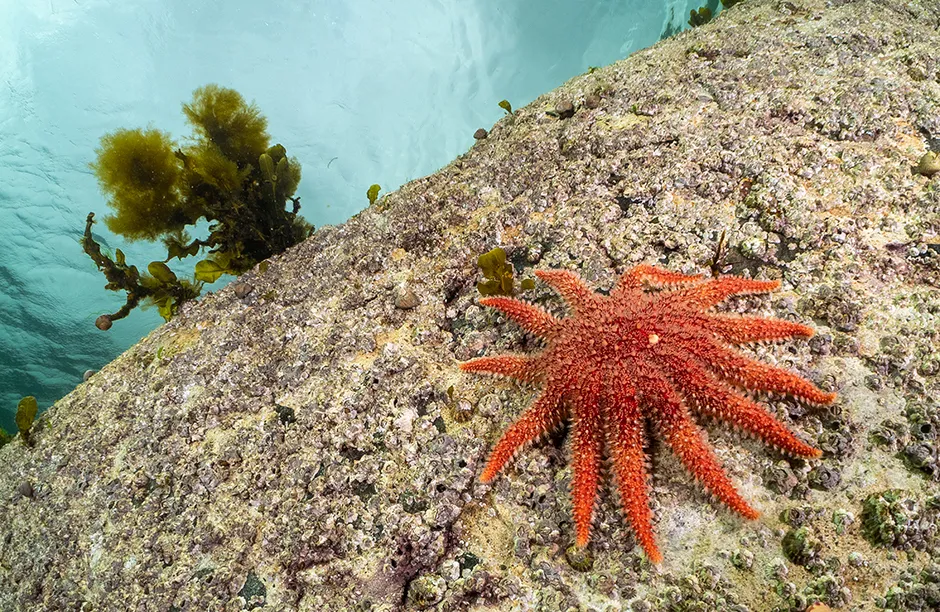
Photographer Dan Bolt: "I spotted this large Common sun star at the end of a dive in the Loch. It was quite hard to miss, actually! It was on the vertical face of the slip-way I use to enter and exit the water. More often found on the seabed or on reefs, this one spent a few hours snuffling around on the pier, until at the end of my third dive of the day it had totally disappeared... quite a hard trick for such a large and brightly coloured animal!"